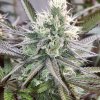EM5 is often used as a type of homemade pesticide. The fermentation extracts properties out of plant materials and the alcohol and retains them in the liquid. The EM•1 in the recipe is the fermentation catalyst. EM•1 itself has no pesticide qualities at all. This is an all-natural concoction that can be made by anyone and is in no way harmful to humans or animals. It combines water, EM•1, a distilled spirit, molasses, and vinegar. The most successful programs with EM5 involve alternating its applications with Activated EM•1 and EMFPE. EM5 is effective for reducing pest populations because EM5 contains esters formed by mixing acetic acid and alcohol, which provokes intestinal intoxication.
The formula for one gallon of EM5 is as follows (1:1:1:1:20):
3/4 C EM•1
3/4 C Molasses
3/4 C Vinegar (white or apple cider)
3/4 C distilled alcohol (vodka, whiskey, tequila)
Add some other plant material (fresh hot peppers or garlic...or fresh herbs that have known pesticide properties like mint leaves, lavender, eucalyptus, mella luca, neem, etc.)
Fill the gallon container with warm water (110-120ºF)
Seal and ferment until pH goes below 4.0, 7-11 days
Spray EM5 alternately with EM•1.or EM•1 Fermented Plant Extract through a hose-end sprayer. The thought here is to prevent the pests from getting used to or building a tolerance to the same product.
Often people will set up an informal program as follows (Diluting the AEM•1, EM5, or EM FPE with 500 parts water):
Week One: Apply AEM•1, 1 gallon for 1/2 acre property
Week Two: Apply EM5, 1 gallon for 1/2 acre property
Week Three: Apply EM FPE, 1 gallon for 1/2 acre property
Week Four: Apply AEM•1®, 1 gallon for 1/2 acre property
This pattern is repeated throughout the growing season.





